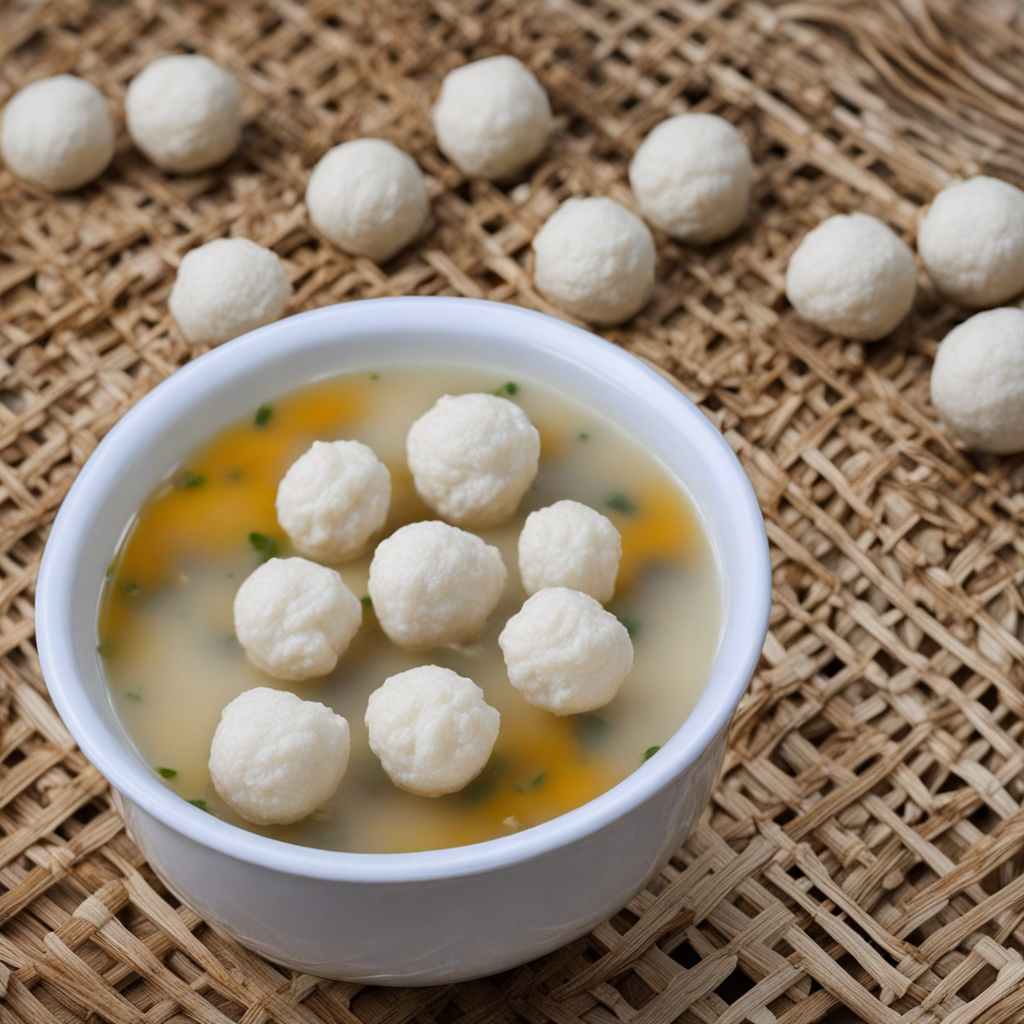Hasip
Hasip is a traditional dish from Turkmenistan that embodies the rich culinary heritage of the region. It is a hearty and comforting meal primarily made from lamb or beef, which is marinated and slow-cooked to achieve a tender texture. The meat is often combined with a mix of aromatic spices, including cumin and coriander, which infuse the dish with a warm, earthy flavor. The cooking process often involves simmering the meat with vegetables such as carrots, onions, and sometimes potatoes, allowing the ingredients to meld together beautifully, creating a savory broth that is both rich and satisfying. One of the unique aspects of Hasip is its method of preparation, which often includes a technique called "tandoor cooking." This involves using a traditional clay oven, which imparts a distinct smoky flavor to the meat. The slow cooking in the tandoor not only enhances the taste but also ensures that the meat remains juicy and tender. Some variations of Hasip may also include a layer of dough, which acts as a lid during the cooking process, trapping steam and flavors within, resulting in a dish that is both fragrant and delicious. Traditionally served with flatbread, Hasip is not just a meal but an experience that brings people together. The dish is often enjoyed during special occasions and family gatherings, showcasing the importance of communal dining in Turkmen culture. Each bite of Hasip is a journey through the robust flavors of the region, reflecting the warmth and hospitality of Turkmen people. For anyone looking to explore a new taste, Hasip offers a delightful blend of spices, tender meat, and a comforting broth that is sure to leave a lasting impression.
How It Became This Dish
The History of Хасып: A Culinary Tradition of Turkmenistan #### Introduction In the heart of Central Asia, the vast steppes and arid regions of Turkmenistan have long nurtured a rich tapestry of cultural traditions, many of which are reflected in the country’s culinary practices. Among these is Хасып (Khasyp), a traditional dish that embodies the essence of Turkmen hospitality, agricultural cycles, and communal life. This engaging exploration of Хасып will delve into its origins, cultural significance, and evolution over time, revealing how this dish has become a cherished emblem of Turkmen identity. #### Origins of Хасып The roots of Хасып can be traced back to the nomadic lifestyles of the Turkmen people, who have historically relied on herding and agriculture for sustenance. The dish is primarily made from wheat flour, water, and a variety of fillings, including meat, vegetables, and spices. It is a versatile food that can be prepared in numerous ways, reflecting the local resources and seasonal variations of the region. The name Хасып is derived from the Turkmen word for "to knead," which emphasizes the fundamental process of preparing the dish. Traditionally, Хасып was made by hand, a practice that fosters a deep connection between the cook and the ingredients. This tactile experience is not merely a culinary technique; it is an expression of care and community, as families often gather to prepare Хасып together. #### Cultural Significance Хасып holds a special place in Turkmen culture, symbolizing generosity and hospitality. In a country where communal gatherings and family ties are deeply valued, Хасып serves as a centerpiece for celebrations and rituals. It is often prepared during important events such as weddings, religious holidays, and festivals. The act of sharing Хасып with guests is a gesture of goodwill, reinforcing social bonds and demonstrating the importance of community in Turkmen life. Moreover, Хасып is associated with the nomadic heritage of the Turkmen people. Traditionally, nomads would carry the essential ingredients for Хасып with them as they moved across the harsh landscape. The dish’s portability and adaptability made it an ideal choice for a lifestyle that demanded resilience and resourcefulness. Thus, Хасып not only nourished the body but also served as a reminder of the Turkmen people's enduring connection to their land and traditions. #### Evolution Over Time As Turkmenistan transitioned from a nomadic society to a more settled agricultural community, the preparation and consumption of Хасып evolved. With the introduction of new agricultural practices and improved access to ingredients, variations of Хасып began to emerge, each reflecting local tastes and customs. While traditional recipes remain popular, new interpretations of the dish now include a wider range of fillings and cooking methods. In contemporary Turkmenistan, Хасып can be found in various forms, from simple homemade versions to more elaborate dishes served in restaurants. The traditional method of preparing Хасып involves rolling out the dough, filling it with a mixture of meat (often lamb or beef), onions, and spices, and then steaming or boiling it. This time-honored technique results in a soft, flavorful dish that showcases the natural ingredients. In urban centers, Хасып has adapted to modern culinary influences, incorporating ingredients and flavors from neighboring countries. This fusion has led to the development of new variants, such as vegetarian Хасып filled with seasonal vegetables or spicy versions that appeal to contemporary palates. Despite these changes, the core essence of Хасып as a symbol of hospitality and community remains intact. #### Regional Variations Across Turkmenistan, regional variations of Хасып reflect the diverse cultural influences and geographical conditions of the country. In the northern regions, where wheat cultivation is more prevalent, Хасып tends to be thicker and heartier, often featuring generous portions of meat. In contrast, southern Turkmenistan, known for its rich agricultural landscape, produces lighter versions of Хасып, often incorporating fresh herbs and vegetables. Additionally, the preparation of Хасып can vary significantly among different ethnic groups within Turkmenistan. While Turkmen are the predominant ethnic group, the country is home to various minorities, each contributing their unique flavors and techniques to the dish. This diversity enriches the culinary landscape of Turkmenistan and showcases the harmonious coexistence of different cultures. #### Хасып in Contemporary Turkmen Society Today, Хасып is celebrated not only as a traditional dish but also as a symbol of national identity. In a modernizing Turkmenistan, where globalization and urbanization have brought new challenges, the preservation of traditional foods like Хасып plays a crucial role in maintaining cultural heritage. Culinary festivals and events often feature Хасып as a highlight, allowing locals and visitors alike to experience the rich flavors and historical significance of this beloved dish. Moreover, the resurgence of interest in traditional cooking methods has led to a renewed appreciation for Хасып. Many families are returning to the practice of making Хасып from scratch, using locally sourced ingredients and time-honored techniques. This revival not only supports local farmers and artisans but also reinforces the importance of communal cooking and the sharing of culinary knowledge across generations. #### Conclusion Хасып is more than just a dish; it is a living testament to the history, culture, and identity of the Turkmen people. From its nomadic origins to its modern interpretations, Хасып embodies the spirit of hospitality and the importance of community in Turkmenistan. As the country continues to navigate the complexities of modern life, the enduring legacy of Хасып serves as a reminder of the rich culinary traditions that define Turkmen culture. Through the shared experience of preparing and enjoying Хасып, the Turkmen people celebrate their heritage, strengthen their bonds, and pass down their culinary legacy to future generations.
You may like
Discover local flavors from Turkmenistan







